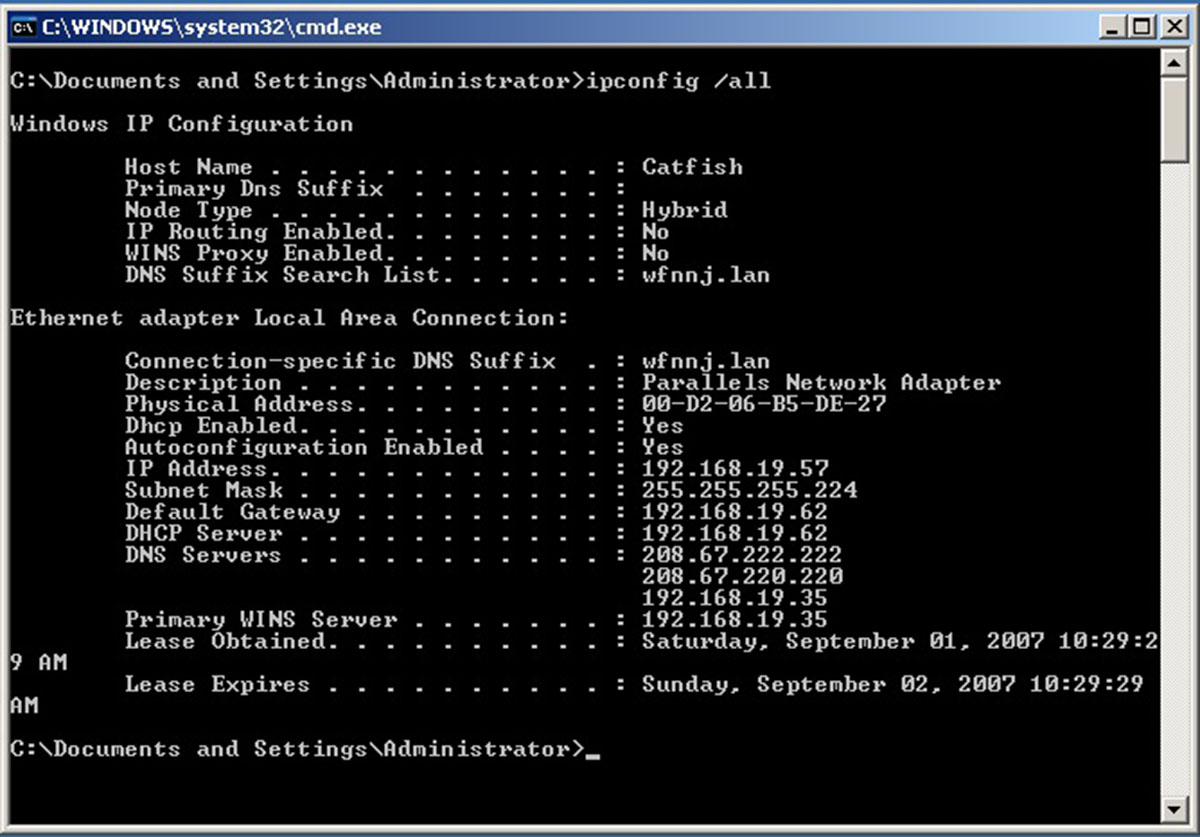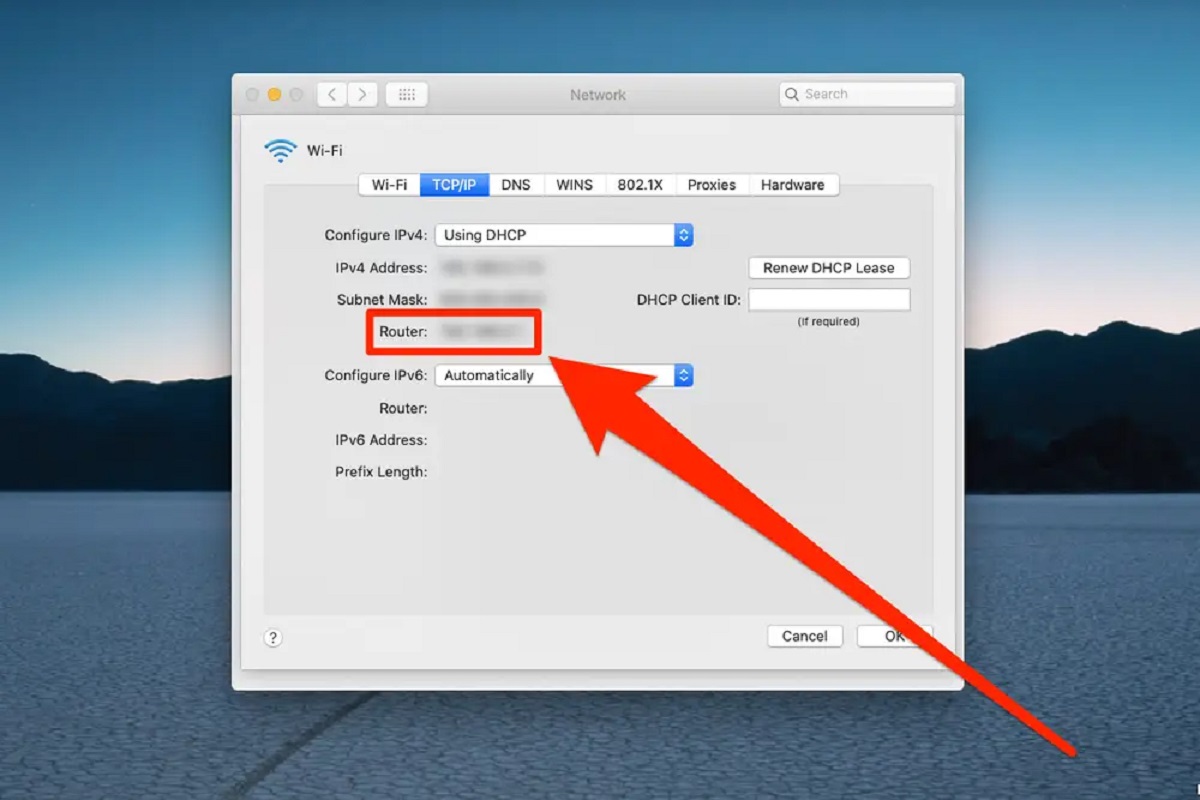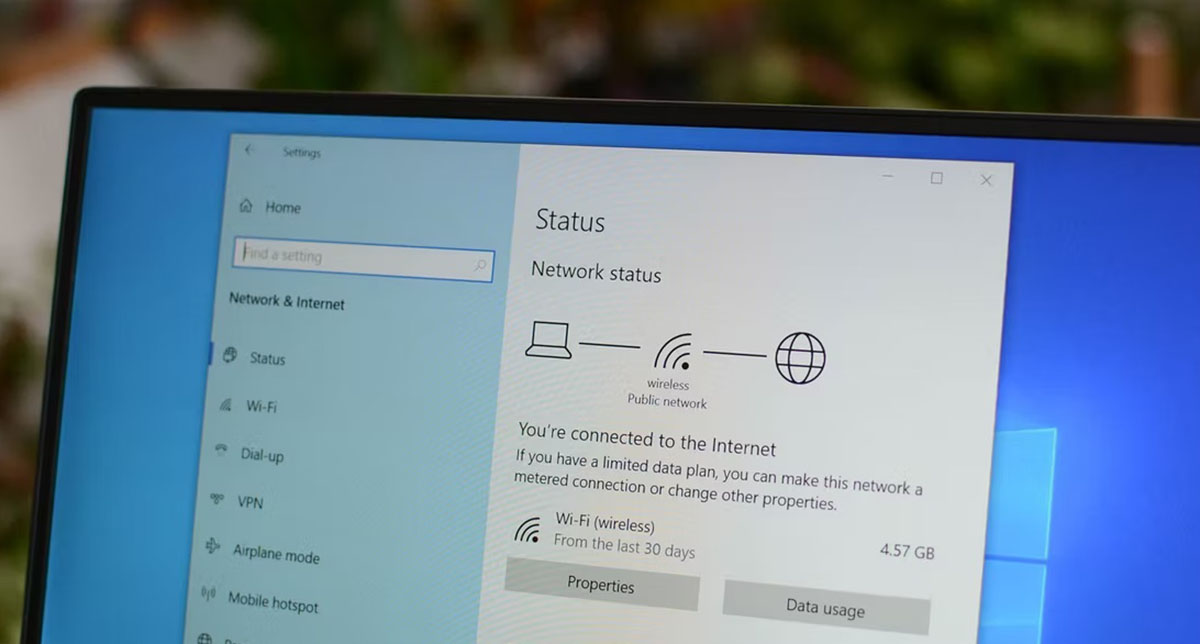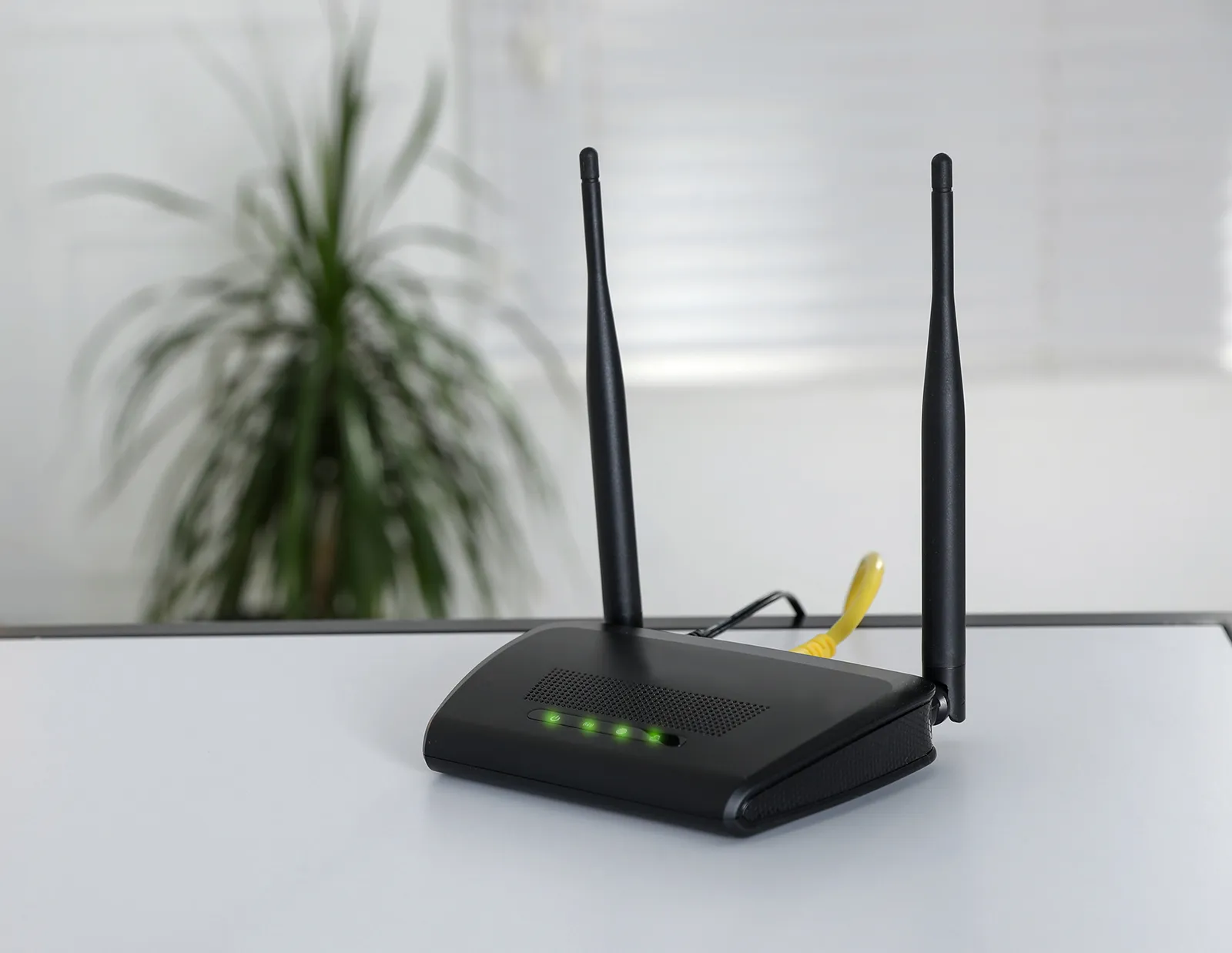Introduction
An IP address, short for Internet Protocol address, is a unique numerical label assigned to each device connected to a computer network that uses the Internet Protocol for communication. It serves as an identifier to locate and communicate with devices on the network.
Every website, computer, smartphone, or any other device that accesses the internet is assigned an IP address, allowing it to send and receive data from other devices. IP addresses play a crucial role in the functioning of the internet, enabling data transmission and facilitating communication between devices across the globe.
Understanding what an IP address is and how it works is essential for anyone using the internet. Whether you are a casual internet user or a tech enthusiast, having a basic understanding of IP addresses can help you troubleshoot network issues, protect your online privacy, and make informed decisions regarding your online activities.
In this article, we will explore the different types of IP addresses, the distinction between static and dynamic IP addresses, how to find your IP address, why it is important to know your IP address, and how you can hide your IP address for enhanced privacy and security.
What is an IP Address?
An IP address, or Internet Protocol address, is a unique numerical label assigned to each device connected to a computer network. It serves as the device’s identifier and enables it to communicate with other devices on the network using the Internet Protocol.
IP addresses can be thought of as similar to a postal address or phone number for devices on the internet. They allow data to be routed from one device to another, ensuring successful communication across the network. Without IP addresses, devices would not be able to send or receive data, effectively rendering the internet useless.
An IP address consists of a series of numbers separated by periods. Each number in the address represents a specific part of the network hierarchy. There are two types of IP addresses: IPv4 and IPv6.
IPv4, which stands for Internet Protocol version 4, is the most widely used format. It consists of four sets of numbers, each ranging from 0 to 255 (e.g., 192.168.0.1). However, due to the limited number of available IPv4 addresses, a newer version called IPv6 has been introduced.
IPv6, or Internet Protocol version 6, is designed to address the limitation of IPv4. It uses a longer address format, consisting of eight groups of four hexadecimal digits separated by colons (e.g., 2001:0db8:85a3:0000:0000:8a2e:0370:7334).
IP addresses play a fundamental role in the functioning of the internet. They allow devices to communicate with each other, enabling activities like browsing the web, sending emails, streaming videos, and much more.
Types of IP Addresses
There are two main types of IP addresses: public IP addresses and private IP addresses. Let’s take a closer look at each:
- Public IP Addresses: A public IP address is assigned to a device directly connected to the internet. It is unique and globally recognizable, allowing the device to communicate with other devices across the internet. Public IP addresses are typically provided by Internet Service Providers (ISPs) and are visible to websites and other online services.
- Private IP Addresses: A private IP address is used within a local network to identify devices connected to it. It is not globally unique and is meant for internal use only. Private IP addresses are commonly used in homes, offices, or small businesses to create a local network and allow devices to communicate with each other without being directly exposed to the internet. Private IP addresses cannot be accessed or recognized by devices outside the local network.
Private IP addresses are defined by specific ranges reserved for internal use. The most commonly used private IP address range is defined by the Internet Assigned Numbers Authority (IANA) and includes:
- IPv4 Private IP Addresses: 10.0.0.0 to 10.255.255.255, 172.16.0.0 to 172.31.255.255, 192.168.0.0 to 192.168.255.255
- IPv6 Private IP Addresses: fc00::/7
Private IP addresses provide a layer of security as they are not directly accessible from the internet. They allow multiple devices to share a single public IP address, alleviating the scarcity of available public IP addresses in IPv4.
It’s important to note that private IP addresses cannot be used to access the internet directly. To communicate with devices outside the local network, they need to be translated to a public IP address using a process called Network Address Translation (NAT).
Understanding the distinction between public and private IP addresses is crucial when setting up networks, configuring routers, or managing online security and privacy. It ensures that data is routed correctly and that devices are appropriately protected within the local network.
Static vs. Dynamic IP Addresses
When it comes to IP addresses, there are also two types of assignment methods: static and dynamic. Here’s a breakdown of each:
- Static IP Addresses: A static IP address is manually assigned to a device and remains fixed. It does not change unless it is manually reconfigured. Static IP addresses are often used for devices that require a permanent and consistent address, such as servers, printers, or network devices. With a static IP address, the device will always have the same address, allowing for easy accessibility and consistent connection.
- Dynamic IP Addresses: A dynamic IP address is automatically assigned to a device by a Dynamic Host Configuration Protocol (DHCP) server. These addresses are temporary and subject to change. When a device connects to a network, it requests an IP address from the DHCP server, which assigns an available address from a pool of addresses. This allows for efficient address allocation and enables multiple devices to share a limited number of IP addresses. Dynamic IP addresses are commonly used for personal devices, such as laptops, smartphones, or tablets, as they do not require a permanent address.
The choice between static and dynamic IP addresses depends on the specific requirements and use cases. Static IP addresses offer stability and convenience for devices that require constant accessibility or services that rely on fixed addresses, such as web servers. On the other hand, dynamic IP addresses are more flexible and efficient for devices that connect and disconnect frequently, such as mobile devices or devices in a dynamic network environment.
It’s worth noting that dynamic IP addresses can still provide consistent access through techniques such as dynamic DNS, which associates a domain name with the changing IP address. With dynamic DNS, users can access devices with dynamic IP addresses by using a domain name that updates automatically when the IP address changes.
Understanding the distinction between static and dynamic IP addresses allows for better network management and the ability to choose the appropriate address assignment method based on the specific needs of each device or network.
How to Find Your IP Address?
Knowing how to find your IP address is essential for troubleshooting network issues, configuring devices, or accessing network settings. Here are a few methods to easily find your IP address:
- Using the Command Prompt (Windows): Open the Command Prompt by pressing the Windows key + R, typing “cmd” in the Run dialog, and pressing Enter. In the Command Prompt window, type “ipconfig” and press Enter. Your IP address will be listed under the “IPv4 Address” or “IPv6 Address” section, depending on your network configuration.
- Using System Preferences (Mac): Click on the Apple menu in the top-left corner of your screen and select “System Preferences.” In the System Preferences window, click on “Network.” Your IP address will be displayed next to “IP Address” under the active network connection.
- Using the Settings App (iOS/Android): On iOS, go to the “Settings” app, tap on “Wi-Fi,” and then tap on the connected Wi-Fi network. The IP address will be displayed as “IP Address.” On Android, go to the “Settings” app, tap on “Network & Internet” or “Connections,” then tap on “Wi-Fi.” Tap on the connected Wi-Fi network and look for the IP address under the “IP Address” section.
- Using a Website: If you prefer not to access system settings, there are numerous websites that can display your IP address. Simply open a web browser and search for “What is my IP address?” The search results will provide websites that show your public IP address.
Keep in mind that there are two types of IP addresses you can find – the public IP address, which is the address assigned to your router by your ISP, and the private IP address, which is the address assigned to your individual device on the local network.
Finding your IP address is a straightforward process and can be done using either built-in system tools or online resources. Being aware of your IP address allows you to configure devices, troubleshoot connectivity issues, and ensure proper communication on the network.
The Importance of Knowing Your IP Address
Knowing your IP address holds several advantages and can have a significant impact on your online activities. Here are some reasons why it is important to know your IP address:
1. Network Troubleshooting: When experiencing network connectivity issues, knowing your IP address can help pinpoint the problem. It allows you to communicate with technical support or search for specific solutions related to your IP address configuration.
2. Secure Remote Access: If you need to remotely access your home or office network, knowing your IP address is crucial. Whether for file sharing, remote desktop connections, or accessing network resources, your IP address ensures secure and convenient remote access.
3. Online Gaming and Streaming: Many online games and streaming platforms require a smooth and uninterrupted connection. Knowing your IP address can help you configure your network settings or troubleshoot problems to ensure optimal performance for online gaming or streaming media.
4. Enhanced Security: Your IP address is a valuable piece of information that can be used by hackers or malicious websites. Being aware of your IP address allows you to take necessary precautions, such as setting up proper firewalls or using virtual private networks (VPNs), to safeguard your online activities and protect your personal information.
5. Content Localization and Access: Some online content, such as streaming services or region-specific websites, may be restricted based on geographical locations. Knowing your IP address can help you determine your location and find ways to access content that may otherwise be unavailable in your region.
6. Online Privacy: Understanding your IP address can empower you to take control of your online privacy. By knowing your IP address, you can assess your exposure to online tracking and implement measures to protect your personal information, such as using proxy servers or VPNs.
7. Network Management: In a small office or home network, knowing the IP addresses of connected devices can be essential for managing and troubleshooting network issues. Identifying devices, assigning specific IP addresses, and configuring network settings become more efficient with this knowledge.
8. Website Analytics: If you own a website, knowing the IP addresses of your site visitors can provide valuable insights into their geographical locations and browsing behavior. It allows you to tailor your content or marketing strategies to target specific audience segments.
Overall, knowing your IP address gives you better control over your online activities, enhances security, and enables you to troubleshoot network problems efficiently. It is an important piece of information that can empower you to make informed decisions and optimize your online experience.
How to Hide Your IP Address?
Hiding your IP address can help protect your online privacy, bypass certain restrictions, and enhance your security while browsing the internet. Here are some methods you can use to hide your IP address:
- Use a Virtual Private Network (VPN): A VPN encrypts your internet connection and routes it through a server located in a different location. This masks your IP address and replaces it with one from the server, effectively hiding your true location and identity. VPNs are widely available and offer various levels of privacy and security.
- Use the Tor Network: The Tor network, also known as The Onion Router, is a free software that enables anonymous communication. Tor routes your internet traffic through a series of volunteer-operated servers, making it difficult for anyone to trace your online activities back to your IP address.
- Proxy Servers: Proxy servers act as intermediaries between your device and the internet. When you use a proxy server, your internet traffic is routed through the server, which masks your IP address. Proxy servers come in different types, such as HTTP, HTTPS, and SOCKS proxies, each with its own benefits and limitations.
- Use a Mobile Network: Instead of relying on your home or office internet connection, you can use your mobile network to connect to the internet. Mobile networks typically assign dynamic IP addresses to devices, making it harder to track your online activities.
- Use a Public Wi-Fi Network: When connecting to a public Wi-Fi network, your IP address may be hidden behind the network’s public IP address. However, be cautious when using public Wi-Fi networks, as they may present security risks if not properly secured.
- Disable Geolocation: Many devices and applications use geolocation services to determine your physical location based on your IP address. Disabling geolocation services in your device settings can help prevent websites and services from tracking your location.
It’s important to consider the trade-offs when hiding your IP address. While it can enhance your privacy and security, it may also impact your internet speed or limit access to certain websites or services that rely on location-based information. Additionally, some methods, such as proxy servers or public Wi-Fi networks, may have security risks or limitations.
Remember to choose a method that aligns with your needs and preferences. Whether it’s using a VPN for comprehensive privacy protection or simply disabling geolocation services, taking steps to hide your IP address can provide an additional layer of privacy and security as you navigate the online world.
Conclusion
Understanding your IP address and its significance is essential for navigating the digital landscape effectively. Whether you’re troubleshooting network issues, securing your online activities, or accessing region-specific content, knowing your IP address is key.
Throughout this article, we explored the concept of IP addresses, the different types such as public and private addresses, and the importance of knowing them. We also discussed the distinction between static and dynamic IP addresses, and how to find your IP address using various methods on different devices.
Furthermore, we highlighted the benefits of hiding your IP address, including enhanced privacy, bypassing restrictions, and securing your online activities. Methods such as using VPNs, proxy servers, or utilizing public Wi-Fi networks can help mask your IP address and protect your identity online.
However, it’s important to note that while hiding your IP address can offer benefits, there are trade-offs to consider. Some methods may impact internet speed or limit access to certain websites or services. It’s crucial to choose a method that aligns with your needs, preferences, and the level of privacy and security you require.
Ultimately, having knowledge about IP addresses empowers you to make informed decisions, troubleshoot network issues, and protect your online privacy. As you continue to explore and utilize the internet, understanding your IP address and its implications will ensure a safer and more secure digital experience.

























